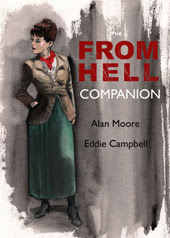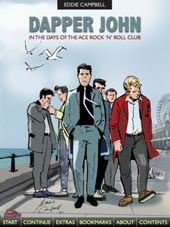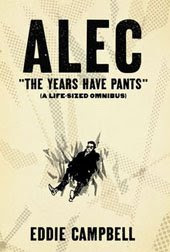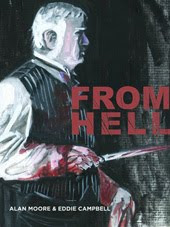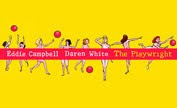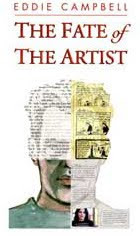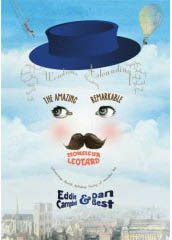Talking statues
Melbourne has a few examples of humorous sculpture around the city. Here's one the skinny blokes, and me. I'm the talking one.
I see this kind of thing all around the world, like the bronze suitcase in the central rail station in Madrid, if it's still there. And I find myself thinking about the fate of sculpture in public spaces over the last thirty years, such as Serra's Tilted arc that was put in front of the Federal Government building in Manhattan in 1981 and after much public contoversy, removed in 1989. It was intended 'to alter and dislocate the decorative function of the plaza', cost $175,000 to erect, $35,000 to dimantle, and $50,000 to re-erect in another location.
Melbourne has a similar story (I'm sure most cities do): Vault, more popularly know as The Yellow Peril, a sculpture erected in 1980 at a cost of $70,000 and, after much controversy, moved the following year. Here is an article titled What the sculpture said:
The sculpture, however, was not banished from the City Square simply because people didn’t like it, but because a group of Councillors finally won the debate that Vault was not appropriate to the City Square of Melbourne. Vault, it was decided then, did not represent the aspirations of Melbourne for its City Square, did not say the things they wanted it to say...Perhaps the real problem was that its big blank spaces were an invitation to scrawl slogans, such as the one for 'JOBS NOW' in this old photo:
Vault, as a sculpture in public, was not only contemporary in its style, material, construction and colour, it did not tell Australian stories. Melbourne was faced with a new type of public sculpture that spoke in a different way.

I am inevitably and mischievously reminded of the tradition of the Talking Statues of Rome. "In 1501 Cardinal Oliviero Carafa put in a small square near Piazza Navona the battered torso of a statue representing Menelaus with the body of Patroclus. Each year on April 25 the Cardinal chaired a sort of Latin literary competition and poems were posted on the statue and occasionally this happened outside the competition period." In this way Pasquino (the name given to the statue, said to be after a well known deformed dwarf) became the first talking statue of Rome. The trick was to sneak out under cover of dark and paste your inflamatory verses or satirical squibs onto the shapeless lump. At one stage the Pope wanted to chuck it in the Tiber to put an end to the mockeries. When guards were put on the statue, the practice was relocated to the colossal staue of a river god at the foot of Capitol Hill. This one was named Marforio and the whole thing became more interesting as Pasquino and Marforio started having conversations. A mutilated colossal priestess of Isis became known as Madam Lucrezia and added a female voice to the comedy.
I love this one:
Via del Babbuino (Baboon) is named after an old statue of a Silenus, which was referred to in derogatory terms as il Babbuino. Its location in the Strangers' Quarter of Rome made it an alternative site for posting pasquinades without a high risk of being caught. Il Babbuino was also used by the large community of foreigners living in the area for lampooning members of the community.(lots of photos at the link.) update. edit to fix mistake caught by second commenter.
Labels: art in public places, humorous sculpture, Melbourne Festival, travels1








